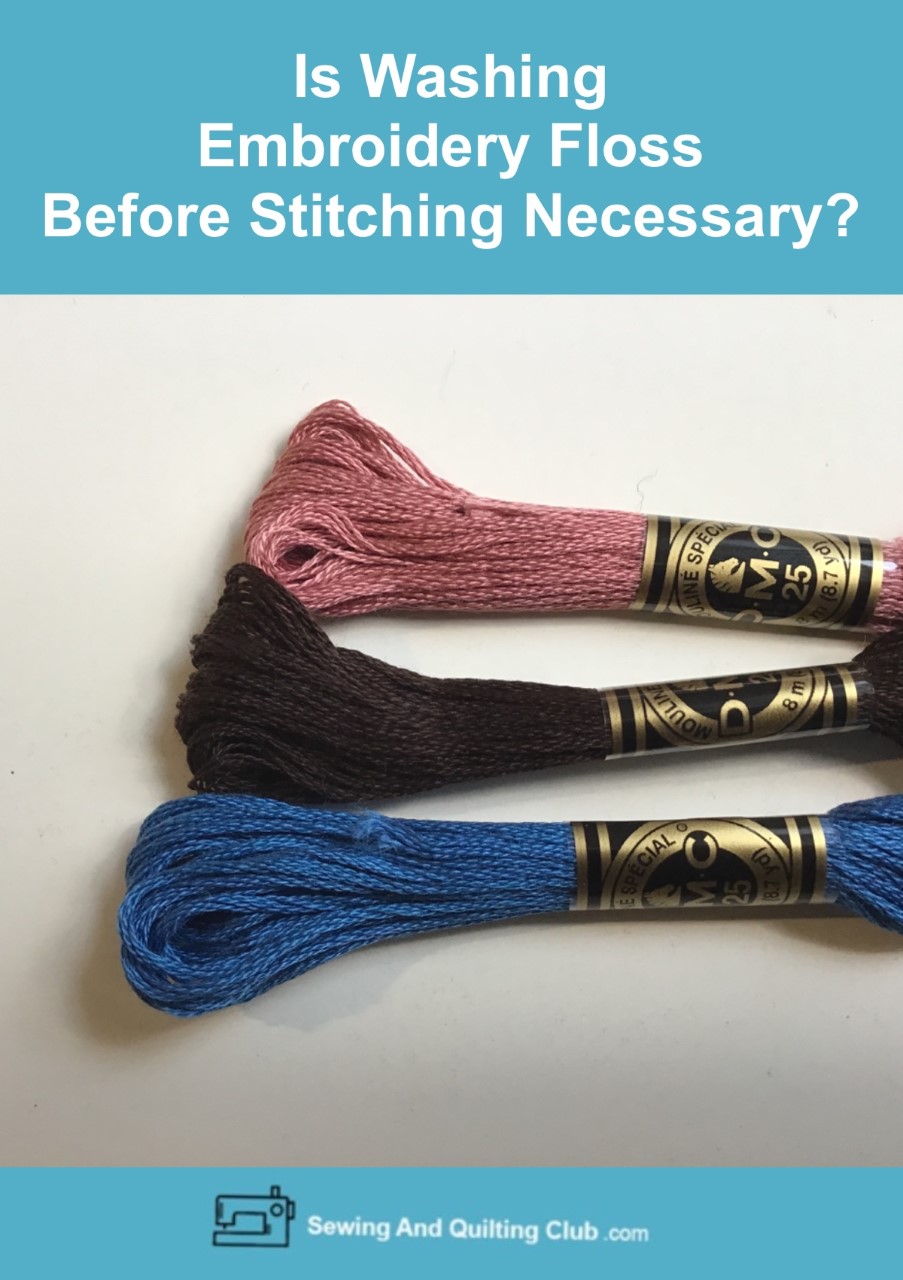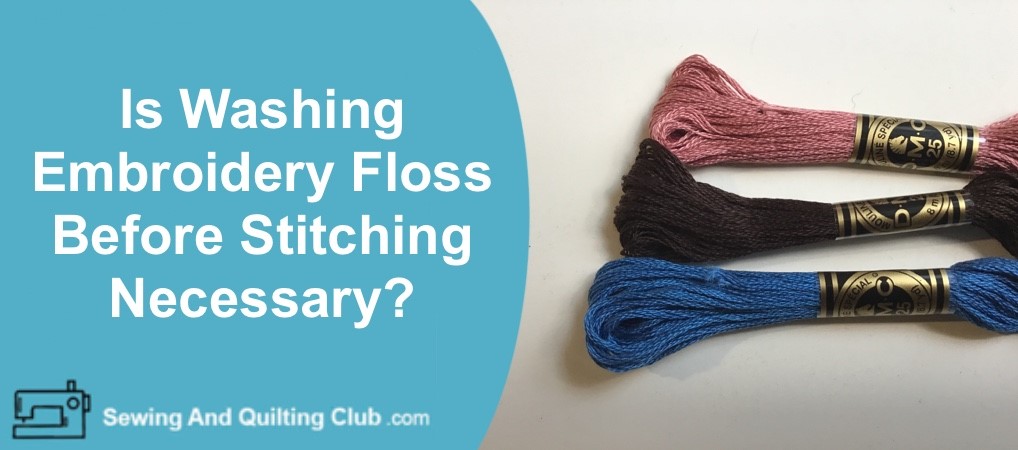When you’re just about to start a new embroidery project, the first thing to do is to choose the embroidery thread or floss you’ll be working with, and you might wonder if it is safe to use them or if you need to pre wash it or not.
Is Washing Embroidery Floss Before Stitching Necessary? If you’re using cotton floss from the brand most known (DMC) the answer will be no, you don’t need to wash your thread before you use it, but if you’re using another brand of thread, and you’ll be working with dark colors like red, navy blue or black, it might be safer to pre wash your thread before you start your stitching.
The Embroidery thread most used by hobbies and needle art artist is made of cotton and this is the reason why it might shrink and bleed, when normally you spend many hours working on an embroidery project, the last thing you want to see is after your wash your finished project, it might end ruined.
Some books and some kits will let you know that it will be safer to pre wash your embroidery floss before you start working on your new embroidery project, I must say I never thought about it, but it makes sense, and more if you’ll be using thread that comes in dark colors that are well-known that they bleed, like red, navy blue or black, it will be always safer to take the time to prewash it.
How To Wash Embroidery Floss Before Stitching?
Washing thread is not as easy as pre washing your fabrics before sewing or doing some embroidery project, you need to prepare your thread, so it doesn’t end tangled and gives you hard times.
Embroidery floss are packed in a way where is easy to take the thread and pull it out to cut a piece that you’ll be working with on your project, but I’m sure when I say, many of us have ended pulling it out the wrong way and it ends being all tangled and it takes some time to fix it.
The best way to prepare any embroidery floss you need to prewash is by removing both paper tags from the thread, and open it on a table and tie a cotton cord in two places.
Prepare a container big enough with cold water and vinegar (10 – 1), put the tied embroidery floss in the container and move it gently with your hands or with a wooden spoon so the water gets into the thread, let it stay in the water for a few minutes.
If you notice your thread starts to bleed, (the water will get the color of your thread), your thread will need to be washed in new water with vinegar as many times as it stops bleeding.
When you see your thread is not bleeding or it stops bleeding, you can rinse your thread in a container with clear water.
Take your thread in your hands and place it on a clean towel and let the towel get all the water from your thread, you can place your thread where it can dry by hanging it in a safe place, like indoors laundry line. It will be always safer to let it dry indoors or in a shady place, as sun light can ruin your thread color.
How To Store Your Washed Embroidery Floss?
Place your washed thread on a table and remove the cotton cord by trimming it with a pair of scissors, place your thread somewhere where it won’t get tangled and find one end, now you can wind the skein of floss in a cupboard or plastic bobbin.
And your embroidery thread is now safe to be used on your new embroidery project!
I’m not sure if an embroidery thread needs to be pre washed or not?
When you’re not sure if an embroidery thread will bleed or not, it will be always safer to make a test before you start working on your project.
Cut a piece of thread and some stitching in a white fabric, submerge this sample in a clear glass of water and let it stand there for a few minutes, if you notice any bleeding in the water or in the fabric, then your thread needs to be washed, if you don’t notice any bleeding in the water or in the white fabric, then your thread is safe to be used.


